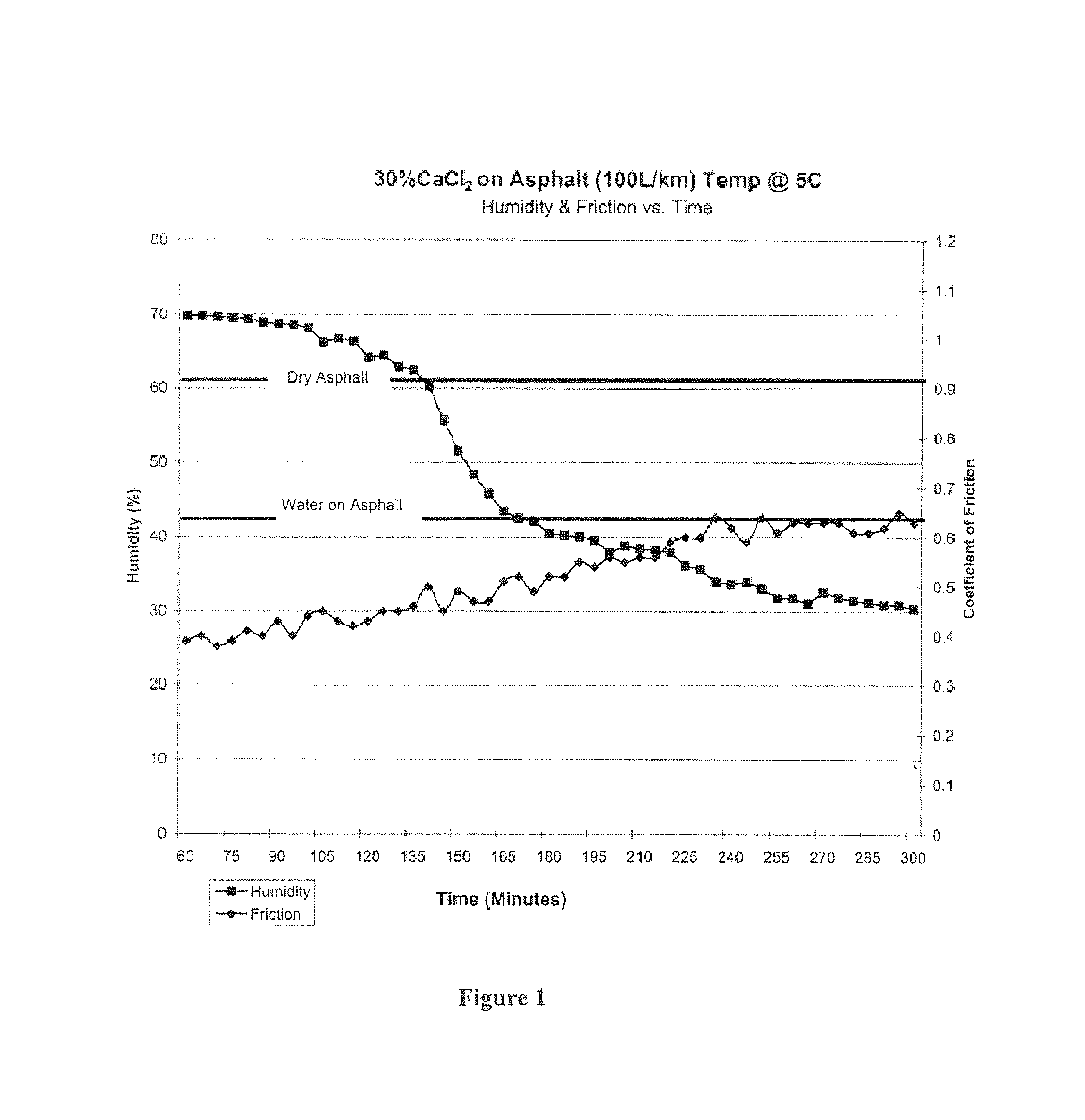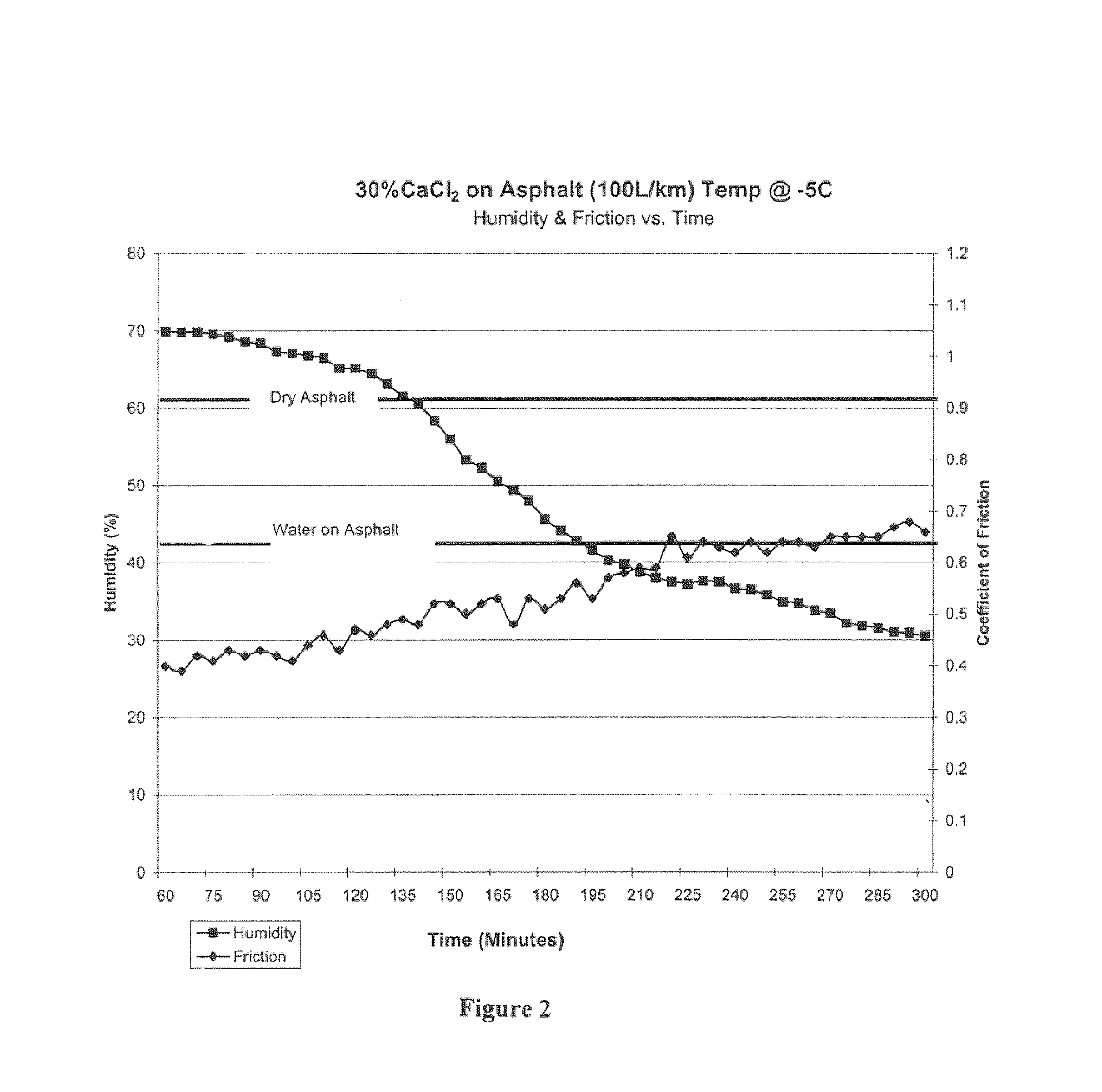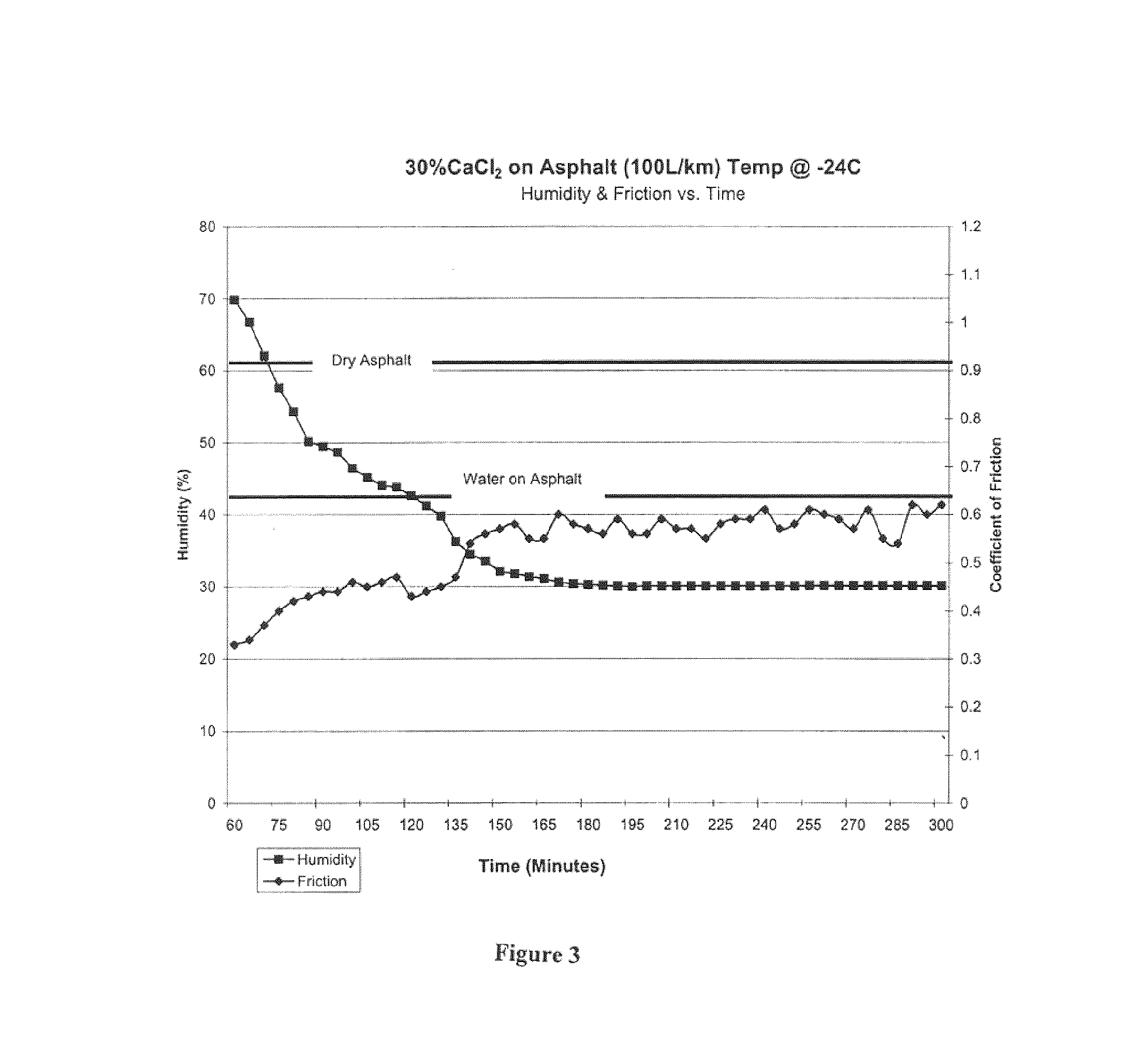Deicing formulation utilizing co-products from lignocellulose to bio fuel process
a technology of co-products and lignocellulosic biomass, which is applied in the direction of glucose production, other chemical processes, chemistry apparatus and processes, etc., can solve the problems of increasing the overall cost of sodium chloride, severely corroding roadside barriers, bridges and the like, and the effect of roadside vegetation and groundwater
- Summary
- Abstract
- Description
- Claims
- Application Information
AI Technical Summary
Benefits of technology
Problems solved by technology
Method used
Image
Examples
example 1
[0087]Batch steam pretreatment of corncob was carried out in a steam gun. The process included supplying the steam gun with saturated steam from a steam storage vessel, through a steam valve and with pre-steamed ground corncobs of 0.5 to 1 cm3 particle size through a V-shaped hopper and screw auger. The amount of each batch load was controlled by a weigh hopper. Batch loads of 6 kg dry corncob were used per steam explosion shot. Pressurized saturated steam at temperatures of 190 to 210° C. was fed into the steam gun until the desired cooking pressure was reached. Cooking pressures of 180 to 275 psig were used (12.6 to 19.1 bar).
[0088]After a residence time of 3 to 10 minutes, the pressure in the steam gun was quickly released by opening a flash purge valve located at the bottom of the steam gun. Solids and gaseous reaction products ejected from the steam gun on pressure release are separated in a cyclone separator. The solids were collected at the bottom of the separator and are ref...
example 2
[0095]A side stream from lignocellulosic biomass pretreatment solution, containing among other things hemicellulose, having 17.8% solids with a specific gravity of 1.0745 was used as starting material The side stream solution was concentrated in an 8 L beaker over an open flame with constant stirring. 100 ml samples were extracted from the beaker with every 25% reduction in the total volume. Once the total volume was down to 25%, the beaker was refilled with the starting side stream material. The extracted samples were tested for specific gravity, % solids and viscosity.
[0096]
Specific Gravity% Solids@ 60° F.Viscosity10.001.04251.917.801.07452.827.581.11303.135.001.14113.541.231.17173.849.701.21084.052.001.22474.357.771.25244.559.411.26025.1
[0097]The sample solution having 57.77% solids (the “57.77% solids solution”) was selected for mixing with deicing solution for testing. The 57.77% solids solution was easily attainable without excessive heat degradation resulting in the side stre...
example 3
[0117]Further experiments were conducted using by-products from lignocellulosic biomass processing which included a pre-treatment hydrolysis step prior to the processing. In particular, the pre-treatment was either dilute acid hydrolysis (“DAP”) or high pressure autohydrolysis (“HPA”). An example of HPA is described in Example 1.
[0118]Because these by-products are more acidic, a base was used to neutralize the pH. Table 1 below shows properties of samples of by-products from lignocellulosic biomass processing using DAP and HPA, the base added to adjust pH, the value of the pH adjusted to, the amount of base required to adjust, and the eutectic temperature (freezing point) of the solution. The starting pH of the samples were as follows: C5-DAP add back 1.61; C5-DAP-as is 1.63; C-5HPA-add back 3.42; and C5-HPA-as is 3.70. The samples which are identified with “add back” were samples where vapors were collected during the DAP and HPA pre-treatment and condensed and added back. As such ...
PUM
| Property | Measurement | Unit |
|---|---|---|
| temperature | aaaaa | aaaaa |
| humidity | aaaaa | aaaaa |
| temperature | aaaaa | aaaaa |
Abstract
Description
Claims
Application Information
 Login to View More
Login to View More - R&D
- Intellectual Property
- Life Sciences
- Materials
- Tech Scout
- Unparalleled Data Quality
- Higher Quality Content
- 60% Fewer Hallucinations
Browse by: Latest US Patents, China's latest patents, Technical Efficacy Thesaurus, Application Domain, Technology Topic, Popular Technical Reports.
© 2025 PatSnap. All rights reserved.Legal|Privacy policy|Modern Slavery Act Transparency Statement|Sitemap|About US| Contact US: help@patsnap.com



